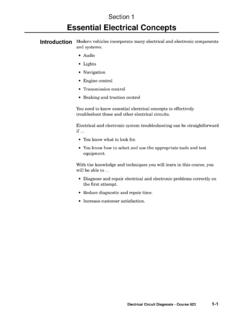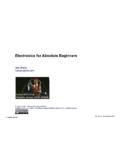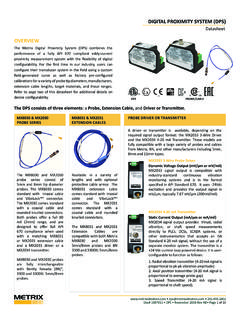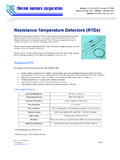Transcription of EMC Testing Part 2 - compliance-club.com
1 EMC Testing part 2 Conducted Emissions By Eur Ing Keith Armstrong MIEE MIEEE, Partner, Cherry Clough Consultants, Tim Williams MIEE, Director, Elmac Services Both Associates of EMC-UK. This is the second in a series of seven bi-monthly articles on do-it-yourself' electromagnetic compatibility (EMC) Testing techniques for apparatus covered by the European EMC directive. This series will cover the whole range of test methods from simple tests for development and fault-finding purposes, through lowest-cost EMC checks; pre-compliance' Testing with various degrees of accuracy, on-site Testing for large systems and installations; to full-specification compliance Testing capable of meeting the requirements of national test accreditation bodies.
2 Of course, what is low-cost to an organisation of 5000 people could be thought fairly expensive by a company of 50, and might be too expensive for a one-person outfit, but we will cover the complete range of possible costs here so that no-one is left out. Remember though, that the more you want to save money on EMC Testing , or reduce the likelihood of being found selling non-compliant products, the cleverer and more skilled you need to be. Low cost, low risk and low EMC skills do not go together. This series does not cover management and legal issues ( how much Testing should one do to ensure compliance with the EMC Directive).
3 Neither does it describe how to actually perform EMC tests in sufficient detail. Much more information is available from the test standards themselves and from the references provided at the end of these articles. The topics which will be covered in these seven articles are: 1) Radiated emissions 2) Conducted emissions 3) Fast transient burst, surge, electrostatic discharge 4) Radiated immunity 5) Conducted immunity 6) Low frequency magnetic fields (emissions and immunity), mains dips and dropouts, etc. 7) Harmonics and flicker emissions Table of contents for this part 2 Conducted emissions Transducers for conducted emissions tests Close-field probes Bug detectors'.
4 current probes Absorbing clamps Voltage probe Errors in non-invasive measurements due to impedance variations LISNs and AMNs Measuring CM and DM with LISNs Transient limiters ISNs Development, diagnostic, and QA Testing Using oscilloscopes Using low-cost spectrum analysers Using radio receivers Pre-compliance' Testing On-site Testing of systems and installations Full compliance Testing Mains conducted tests Telecom cables Disturbance power' tests Discontinuous disturbances Instrumentation requirements for conducted and radiated emissions tests 2 Conducted emissions part 0 of this series [1] described the various types of EMC test that might be carried out, including: Development Testing and diagnostics (to save time and money).
5 Pre-compliance Testing (to save time and money). Full compliance Testing QA Testing (to ensure continuing compliance in volume manufacture). Testing of changes and variants (to ensure continuing compliance). And part 0 also described how to go about getting the best value when using a third-party test laboratory. This part of the series focuses on Testing conducted emissions to the typical domestic / commercial /. industrial EN standard mainly over the frequency range 150kHz to 30 MHz. There are many other kinds of conducted tests [2] and for other test standards some people will need to measure above 30 MHz, and some people might need to measure below 150kHz.
6 Military conducted emissions Testing also covers a much wider frequency range than 150kHz to 30Hz. Section at the end of this article is a useful discussion of the characteristics of EMC emissions instrumentation of interest for both conducted and radiated Testing . IMPORTANT SAFETY NOTE: When carrying out conducted emissions tests on mains or other electrically hazardous conductors, all appropriate safety precautions must be taken. These tests can be dangerous. Transducers for conducted emissions tests Close-field probes Close-field magnetic and electric field probes are low-cost to buy and very quick and easy to make.
7 They are commonly used in development, diagnostic and QA work. These transducers can easily be home- made, and were described in some detail in part of this series [1]. For conducted emissions at frequencies below 30 MHz, larger diameter or multi-turn magnetic loop probes are preferred. Measuring conducted emissions is just the same technique as measuring radiated emissions with one of these probes : the probe is touched against the cable and oriented to obtain the maximum signal (usually when the plane of the coil is aligned with the cable run, with the cable at the furthest point of the probe.)
8 When Testing product emissions, apply the probe close to the point where the cable concerned leaves the body of the equipment under test (EUT). Close-field probes can be connected to oscilloscopes, EMC receivers, or spectrum analysers, and can be very useful in skilled hands as diagnostic or QA tools, especially if a golden product' is available for comparison as described in section of part 1 of this series [1]. Make sure all probes are insulated sufficiently to cope safely with the voltages being tested. Pin probes (see figure 2 of [1]) may be used on low-voltage signal conductors, but never on hazardous voltages such as mains.
9 Use the special Voltage Probe (see below) for all hazardous voltages. Bug detectors'. part of [1] described bug detectors' for identifying high levels of radiated emissions above 30 MHz, but similar devices can be designed, and are commercially available, for detecting magnetic fields and may be used to indicate approximate levels of conducted emissions in development, diagnostic and QA Testing . To detect conducted emissions, these devices should usually have their insulated sensing tip touched against the cable being measured, close to the EUT. These probes are uncalibrated and neither are they frequency selective they merely tell you by means of a meter or bar-graph whether there is a lot of emissions present or not.
10 Some bug detectors' can identify the frequency of the strongest signal, and some provide outputs which can be connected to oscilloscopes, receivers, or spectrum analysers, enhancing their value considerably by allowing frequency discrimination, but of course their amplitude versus frequency response is almost always uncalibrated so they can't be used to make measurements against test limits. Despite their limitations, bug detectors can be very useful in skilled hands as diagnostic or QA tools, especially with a golden product' (see section of [1]). current probes These were described in part of this series [1], including how to make your own.






